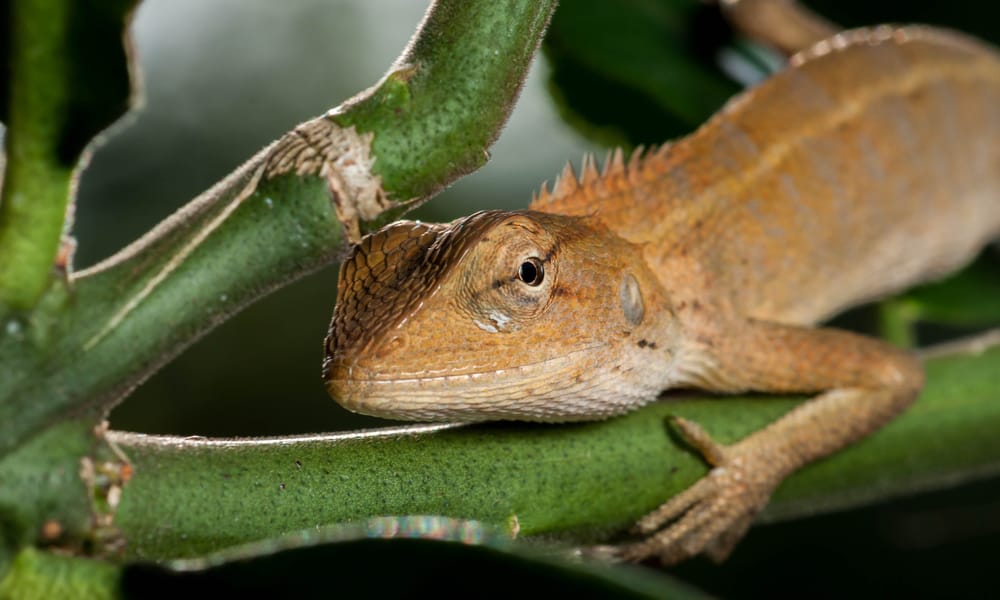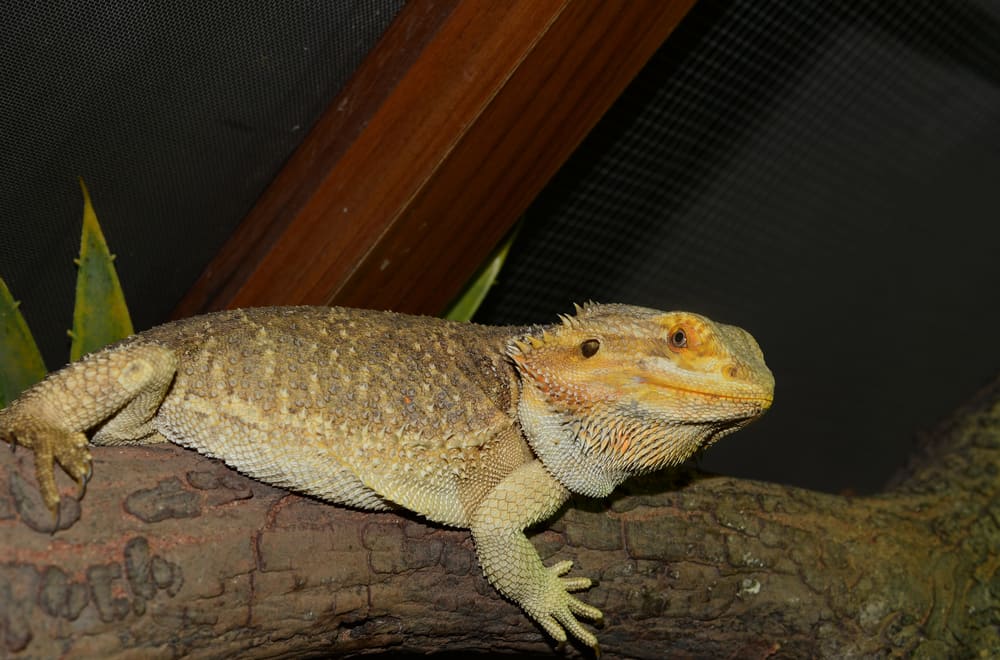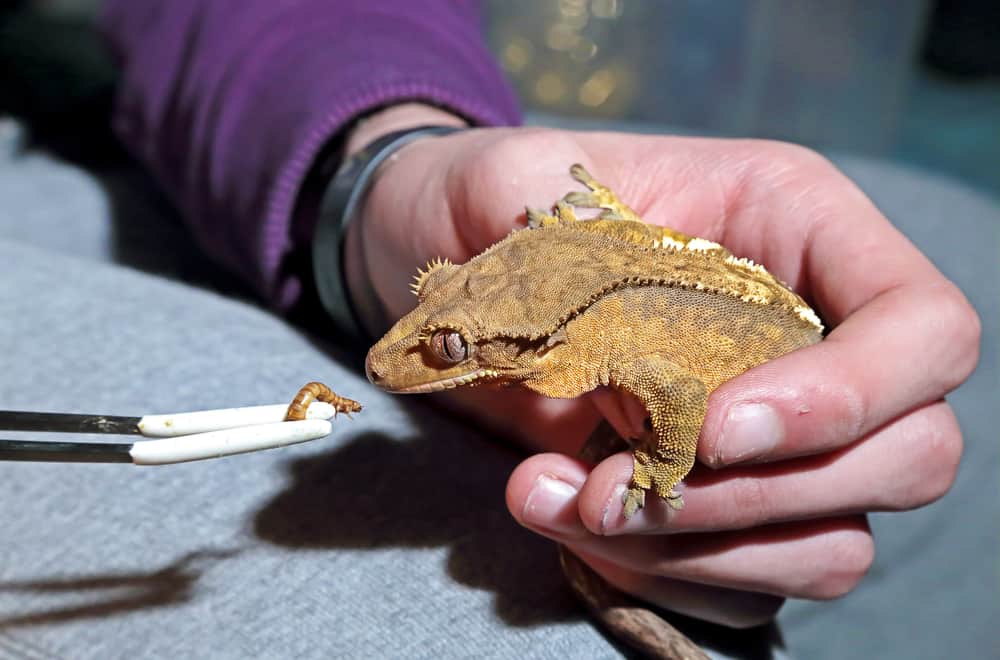Crested geckos or eyelash geckos are well known for being among the best reptile pets. They are low-maintenance pets as compared to cats and dogs and are well-suited for children to own.
If you want to own one or two, you should first ask yourself, “what do crested geckos eat?”
Crested Geckos Habits And Biology
Crested geckos ( Correlophus ciliates) are also known as eyelash geckos due to the hair-like structures they have above their eyes.
The crested gecko species are native to South Province New Caledonia. They inhabit canopies of the New Caledonian rainforests.
Crested geckos are typically 6-10 inches (15-25 cm) in length; this includes the length of their tails that range from 4-6 inches (10-15 cm).
Crested geckos, like other species of geckos, lack eyelids. Instead, they have what is called a transparent scale or spectacle that helps keep the eye moist. They normally use their tongues to clean out debris (dirt) from their eyes.
Tails of the crested gecko are semi-prehensile, meaning that they are adapted to holding and grasping, which aids the gecko in climbing.
Their tails, like most reptiles, can be dropped or detached from the body to distract predators via a process known as autotomy or self-amputation. However, unlike their reptile cousins, crested geckos can’t regenerate their tails once lost.
The toes and tips of the tail of crested geckos have hair-like structures called setae. These structures aid the gecko in climbing most solid surfaces.
They can easily climb on flat, smoother surfaces such as glass and wood. Additionally, crested geckos have tiny claws on their tails that help them climb surfaces that their toes cannot hold on to.
Crested geckos exhibit a range of colors from brown, grey, yellow, or orange of different shades. In the wild, they show a variety of color patterns that serve as camouflage.
Crested geckos are nocturnal and spend most of their days sleeping in safe spots, preferably on high branches away from predators.
What Do Crested Geckos Eat In The Wild?
Crested geckos are omnivorous lizards, and they feed on both animal and plant-based food. However, little is known of what they eat in the wild.
The known information suggests that as nocturnal creatures, they most likely prey on either nocturnal or diurnal insects. These may include various roach species, spiders, crickets, and moths.
Geckos are mainly in brushes throughout the day. They spend better parts of their time jumping from tree to tree, scavenging for food to eat in the evening.
From the little information known of their feeding habits and preferences in the wild, the following are food items they are likely to eat most:
- Water
In the wild, crested geckos will lick water droplets from leaves and other vegetation. Their primary source of water is rainwater.
- Fruits
Crested geckos will eat a wide range of fruits like berries, apples, pineapples, oranges, and many more. They have a sweet tooth and tend to lean towards overripe fruit as opposed to fresh fruit.
- Insects
These lizards will feed on whatever crawly thing they can fit in their tiny mouths, whether they come across beetles, ants, grasshoppers, e.t.c. Majority of these insects are also nocturnal.
- Veggies such as kales and spinach are vital to the crested geckos’ diet.
- Geckos, like other reptiles, molt (shed skin) and will feed on the shed skin to obtain essential nutrients crucial for their growth.
- Hatchlings (baby geckos) survive on nutrients obtained from their egg yolk for the first few days of their lives. During this time, they don’t eat other foods until they molt.
What Do Crested Geckos Eat As Pets?
In captivity, most crested gecko keepers feed their reptile companions a mixture of live insects and commercially prepared crested gecko food.
Most captive geckos flourish best when provided with a diverse diet. These diets, in turn, help to prevent nutritional deficiencies as well as provide mental stimulation.
Insects should make up a more significant percentage of their diets as they are rich in protein and calcium, crucial for growth and development.
Adult crested geckos will survive on three to four meals a week. You can give them a treat every other day. Baby or juvenile geckos tend to eat more often or at least once a day as they have a high metabolism –they eat to accommodate their growing bodies.
Generally, you should provide your pet crested geckos with the below foods to keep them vibrant and healthy:
- Insects
Roaches and crickets are the best insects to serve your gecko. They can act as a staple diet for your reptile.
- Commercial feeds
These foods are typically powdered-based formulas that aim to give the reptiles the nourishment required by their bodies to stay healthy and lively.
The commercial food is blended with water to form a paste that you should feed the gecko about three times weekly.
- Baby food
In the wild, crested geckos thrive on overripe fruits and nectar. Similarly, as pets, they will thrive on human baby food, which is delightful and have juicy flavors. You can feed your pet gecko human baby food at least twice a week.
- Fruits and veggies
Crested geckos can eat a wide array of fruits. These fruits include blueberries, raspberries (other berries), bananas, pears, papaya, watermelon, kiwi, mangos, and peaches.
- Water
Water is as essential to geckos in the wild just as it is essential to geckos in captivity. These reptiles have unique ways of taking in water.
First, they breathe in water vapor from the air. They also prefer taking their water in droplet form from leaves or other surfaces.
Crested geckos require a lot of calcium and vitamin D3 to aid in the digestion of food and keep their muscles and bones strong and developing correctly. The nutrients are used as supplements that are applied to feeder insects and fruits before feeding the gecko.
Without supplying your gecko with calcium and vitamin D3, it stands a chance of suffering from metabolic bone disease and other health-related issues that may be irreversible.
Dusting is the best way to implement calcium supplements into your pet’s diet.
Tips To Feeding Crested Geckos
Crested geckos have to be one of the most exciting reptile pets to keep. They are easy to care for provided you do so correctly, which is not hard.
Once you have their environment set up, ensure to clear it regularly, feed them well, and know how to handle them correctly. There you have it! It’s that simple.
Below are the steps you could follow when it comes to caring for your crested gecko to ensure they live their best life:
- Provide your gecko with a balanced diet.
You can purchase powder mixes for reptiles at pet stores containing all the nutrients required for your reptiles to thrive.
The powder mix should be mixed with water and given to your gecko as much as it wants, three times a week.
- Feed your crested gecko some treats occasionally.
Fruits and gut-loaded crickets serve as good treats for your pet. You can dust the crickets with calcium powder before feeding them to your gecko.
Feed your pet these fruits or crickets three times a week as a treat to supplement their diets. Before feeding crickets to the gecko, feed them food that is beneficial to your geckos. This practice will help ensure your gecko gets the required nutrients from the cricket.
- Ensure to provide your gecko with plenty of water.
Pour some water in a shallow container and place it in your gecko’s enclosure. The water should be clean and always ensure that the container remains full.
- Keep your geckos separately if you have several of them.
You should avoid pairing males together as they can become aggressive towards each other. It would be best to keep them in separate enclosures.
Females are less likely to be aggressive towards each other. However, they may at times display signs of aggression. In this case, consider putting them in separate enclosures. Remember to ask for the sex of your geckos when you buy them.
- Avoid handling your crested geckos soon after you purchase them.
You should first give them time to adjust to their new environments. Consider giving them around 3-4 weeks to get accustomed to their surroundings without becoming stressed.
- Crested geckos are fragile and, therefore, should be handled gently.
Falls can severely hurt geckos. When handling them, keep them above a flat surface such as a table. When you want to move them over distances, carry them over in their enclosure.
Handling your gecko roughly may cause them to detach their tails as a defense mechanism.
Following these steps to the letter will help them live long and healthy lives, and if you’re lucky, it won’t lose its tail.
Summary
Keeping a crested gecko shouldn’t be hard now that you have the answer to “what do geckos eat?”
Crested geckos serve as excellent pets for people of all ages. Remember to feed them a balanced diet inclusive of proteins and fruits and ensure fresh water is always available.


